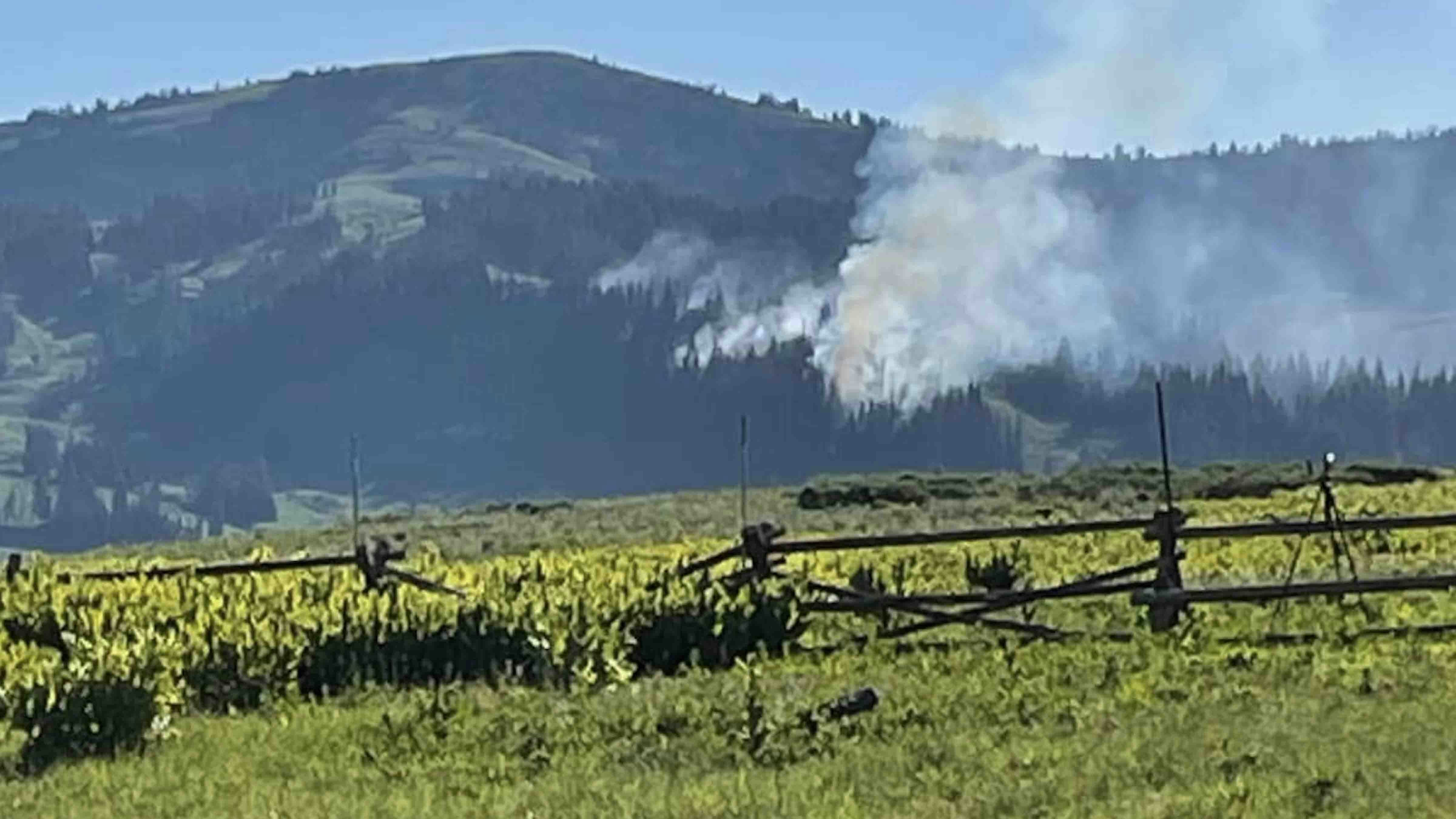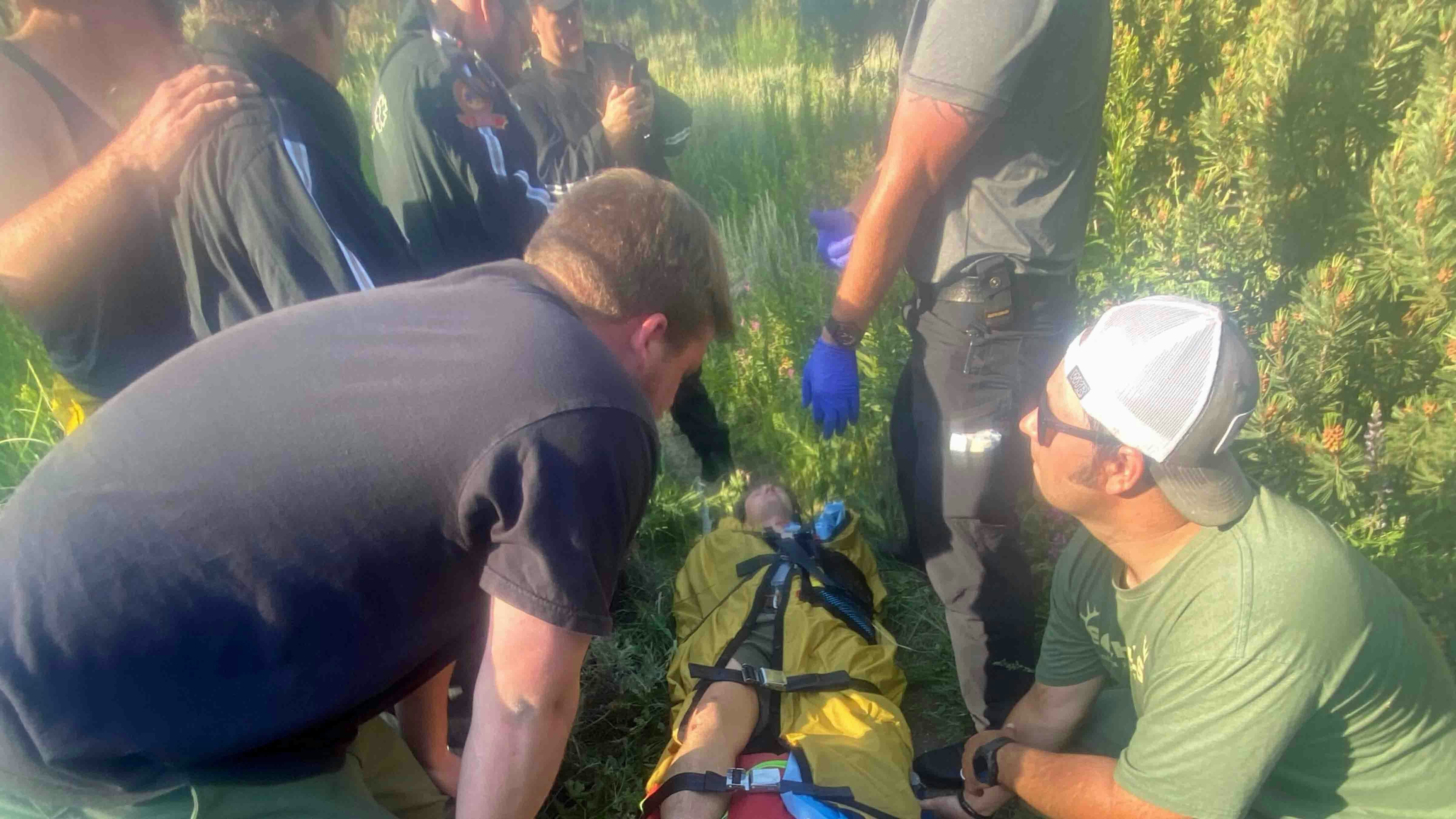Every snowflake or drop of rain that falls in Wyoming’s Wind River Mountains eventually plays a part in quenching the water needs of 20 million Californians, and the demand only seems to be rising.
Meanwhile, the amount of water available from the Colorado River, which is partly fed by the Green River flowing out of the Wind River range, is at best barely holding steady.
That means that as a headwaters state, Wyoming could start feeling pressure from those downriver to give up more. Specifically, Cheyenne gets more than half of its water supply from the Colorado River system.
Along the river’s 1,450-mile course between the Rockies and Mexico, perhaps the most important spot to watch is Lake Powell, said Jason Robison, a University of Wyoming law professor and an expert on the 1922 Colorado River Compact.
Lake Powell is a vital reservoir created by the Glen Canyon Dam that straddles the Utah-Arizona state line. And as goes Lake Powell, so will Flaming Gorge Reservoir and Wyoming’s part of the Colorado River System, Robison said.
Lake Powell is where the pressing demands of the heavily populated Lower Basin of the Colorado River system begin.
“The feds aren’t going to let Lake Powell tank. That’s not going to happen,” Robison said. “And if that entails letting down a bunch more water from Flaming Gorge, than so it would be.”
A Post-2026 World
Lake Powell was reasonably full this week, and snowpack and runoff amounts have been about average so far this year. Last year also was a great water year for the Colorado River, coming on the heels of the epic winter of 2022-2023.
But an overarching pattern of drought has persisted since about 2000, Robison said. And there’s no end in sight.
Much of the tension over the fate of the Colorado River is between the Upper Basin and Lower Basin.
Along the river system, the Upper Basin states include Wyoming, Colorado, Utah and New Mexico. The Lower Basin states are Nevada, California and Arizona.
In a nutshell, the Upper Basin States have stayed within, or even below, the allocations designated to them in the 1922 Colorado River Compact, which is still sets the over-arching policy for water use along the river.
But as populations boomed in the Lower Basin states over the 102 years the compact has been in effect, Colorado River use has typically exceeded their allocations.
Last year, the Lower Basin states struck a deal to trim their use of water from the Colorado River by 3 million acre feet by 2026.
An acre foot is the amount of water that would flood an acre of land to the depth of a foot. Water rights are usually allocated in terms of acre feet.
The Bureau of Reclamation, which has federal jurisdiction over dams, reservoirs and other infrastructure on the river, recently implemented a supplemental environmental impact statement regarding water use.
Those, and other stopgap measures, should at least keep things stable until 2026. But after that, it could be anybody’s guess, Robison said.
Wyoming and the other states, as well Mexico and numerous Native American tribes, all have stakes in the Colorado River, and negotiations are now turning toward what “post-2026” water management will look like, he said.
Cheyenne Left In A Lurch?
Through an elaborate system of water routing and water trades, Cheyenne depends upon the headwaters of the Colorado River for up to 70% of its water supply.
In western Wyoming, the Little Snake River flows into the Yampa River, which flows into the Green River, which in turn flows into the Colorado.
Water from the Little Snake River is piped from the western side of the Continental Divide through a ¾-mile-long tunnel near Encampment. From there, it flows into Hog Park Reservoir, then into the Encampment River and finally into the North Platte River.
However, Cheyenne is supplied through Rob Roy Reservoir in the Snowy Range Mountains. Water flows from there into the Douglas drainage and also into the North Platte.
There is a “gallon-for-gallon” trade between the water coming out of the Little Snake River and that coming out of Rob Roy Reservoir.
Jeff Fassett is a Cheyenne resident and former Wyoming State Engineer, which is Wyoming’s point person on Colorado River policy and agreements with other states.
Cheyenne’s dependency on the Colorado River remains a concern, he said.
It’s not an immediately desperate problem, but it could become one if the larger picture of Colorado River water management destabilizes.
“I know here in Cheyenne, they’re looking for alternatives” over the long term, he said.
Power Pool, Dead Pool
One number that really matters is the surface elevation above sea level at Lake Powell, Robison said. As of this week, it was sitting at right about the target number, 3,525 feet.
What nobody wants is for Lake Powell to hit “power pool” or “dead pool,” Robison said.
Power pool, or a surface elevation of 3,490 feet, is the level at which there would no longer be enough water to turn the electricity-generating turbines at Lake Powell.
Dead pool, or 3,370 feet, would be the point at which there wouldn’t be any outflow from Glen Canyon Dam.
“If we got down to 3,370 feet, the Colorado River would no longer be flowing through the Grand Canyon,” he said.
And that’s a situation in which there would almost certainly be a demand to pull vastly more water from Flaming Gorge and other upstream reservoirs.
Upper Basin Vs. Lower Basin
Many of the Colorado River problems stem from the fact that it essentially isn’t the same river it was in 1922 when the Colorado River Compact was drawn up and the states’ shares were allocated.
Back then, generous estimates put the river’s annual flow at up to 20 million acre feet, although it might have been closer to 16.4 million feet, Robison said.
But even that lower figure was considerably more than the current average of 12.4 million acre feet.
And with large metropolitan areas such as Pheonix and Los Angeles to quench, the greatest demand comes from the Lower Basin.
It never used to be that big of a deal, said Fassett. He recalled that back in the 1980s, Colorado River Water was plentiful.
In fact, there was sometimes concern about Lake Powell overflowing.
"For many, many years, the Lower Basin used not only their full share, but more than their full share, because it was available to them,” he said.
Meanwhile, Wyoming and the other Upper Basin states have never even used their entire allocations, much less exceeded them, said Fassett and Mike Purcell, also of Cheyenne.
Purcell was director of the Wyoming Water Development Program from 1984-1996, and then again from 2007-2012.
“The Upper Basin states have always met their allocated obligations (to provide water downstream). In fact, in most years, we’ve exceeded that requirement,” Purcell said.
Now, as supplies get leaner as the drought persists, it should be up to the Lower Basin states to figure out how to do more with less, as Purcell sees it.
“As an Upper Basin state, you can be sympathetic. And you can be a good neighbor. But the reality is, we’re meeting our compact obligations,” he said. “We’ve done all that we can for them.”
Fassett agreed.
“The real pressure is on the three Lower Basin states. They’ve got to cut back — and not just to what they were allocated. They have to go down below that level,” he said.
California, Arizona And The Ocean
The greatest friction is between Arizona and California.
Years ago, California agreed to help Arizona get federal money for water infrastructure, Purcell and Fassett said.
In return, Arizona agreed to allow California to get “a bigger bite of the apple” in terms of Lower Basin water allocations, Purcell said.
“California held up that federal project until Arizona agreed to subordinate to California,” Fassett said.
Which again, was all well and good back when water was plentiful. But now “as the drought continues to deepen” it’s become a real source of tension between the two states, he said.
One possible solution is for California to greatly ease its demands on the Colorado River by pulling water from the Pacific Ocean and desalinating it. Desalinization involves pulling the salts out of sea water to turn it into fresh water.
“It’s not science fiction,” Robison said. It’s feasible, although expensive.
Fassett and Purcell agreed that might be one way to take some pressure off the Colorado River and dial back tensions between Colorado and Arizona.
“It is a viable possibility. It’s going on, it’s occurring right now,” Fassett said. “It was always very, very expensive, but it’s always been an option that California has, because it’s right on the ocean.”
The good news is that with advancements in technology, desalinization of ocean water “is becoming more economical,” Purcell said.
Everybody Play Nice
Robison said that at least for now, some negotiations between the Upper Basin and Lower Basin have come to a standstill, but at least everybody is still willing to keep talking.
And it’s been encouraging to see the Native American tribes also taking a larger role in the talks, he added.
Fassett likewise said he’s amazed that the states, the federal government, the tribes and Mexico have managed to keep working their way through the problems, and he hopes that pattern holds.
“These things can turn into big fights really quickly, and that hasn’t happened along the Colorado River,” he said. “And while it’s tense, nobody’s giving up, nobody’s leaving the table, nobody’s suing.”
Mark Heinz can be reached at mark@cowboystatedaily.com.





